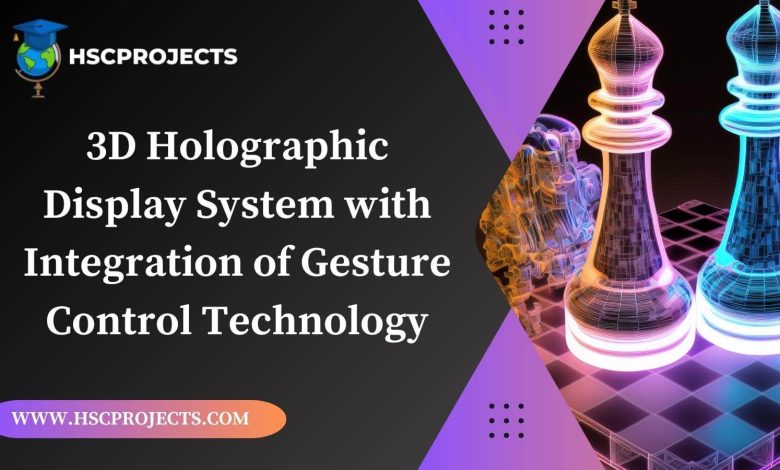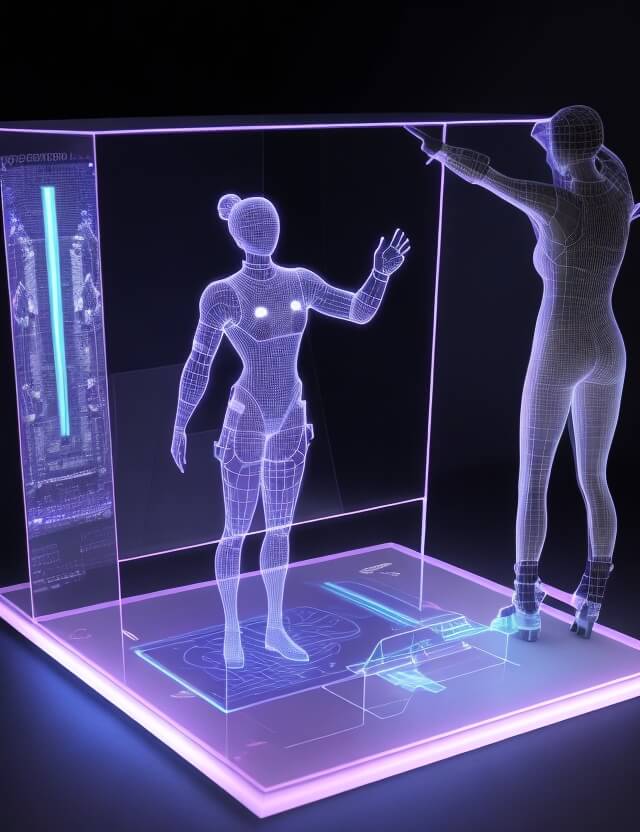
3D Holographic Display System with Integration of Gesture Control Technology
In recent years, the enchanting realm of holography has emerged from the shadows, casting a mesmerizing allure across various fields. The hologram project, a blend of 3D digital holograms and interactive technologies, promises a revolution in how we perceive and interact with digital content. At the heart of this evolution lies the 3D Holographic Display System enriched with a Gesture Controller, a marvel that beckons a new era of interactive digital experiences.
The essence of this system pivots around the 3D hologram projector, an apparatus designed to render three-dimensional holograms either enclosed within a glass tube or seemingly suspended in thin air. This fascinating holographic display unfolds a realm where users can interact with digital content in an entirely unique way, offering a 360-degree viewing perspective. The 3D hologram diagram delineates the sophisticated engineering that underpins the rendering of 3D holographic images.

The core operation of holographic projectors hinges on the 3D holographic projection technology. It’s the meticulous orchestration of part illuminations reflected from multiple viewing angles, converged to reproduce a 3D image of the subject. The 3D hologram box, a meticulously crafted frame, houses a clear pyramid structure designed to project images in a 3D state using a precisely engineered reflective surface.
Central to our system is a Raspberry Pi controller, a linchpin that facilitates the creation of holographic projections through anticipated image refraction via the interference pattern. This meticulous design ensures minimal light loss, thus operating with significantly enhanced efficiency. The system channels part live videos to the projector setup, rendering the desired 3D hologram with captivating clarity.
The novelty doesn’t end here; a Gesture Interface Board introduces an interactive facet to the holographic display. This board, in harmony with a Raspberry Pi, detects user gestures, allowing them to navigate through projections, be it forwarding or rewinding to previous displays, sans any physical touch. It’s an epitome of how holographic computer interfaces can transcend conventional interaction paradigms, ushering an era where digital interaction is as intuitive as natural human gestures.
The supporting frame, connectors, and power supply circuitry are meticulously designed to ensure the robustness and reliability of the 3D holographic display. The software realm is spearheaded by a Python 3 compiler, the programming language of choice, orchestrating the seamless interplay between hardware components and ensuring a responsive user interaction.
In order to download the PDF, You must follow on Youtube. Once done, Click on Submit
Subscribed? Click on Confirm
Download 3D Holographic Display System with Integration of Gesture Control Technology PDF






